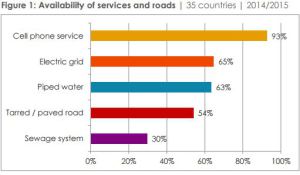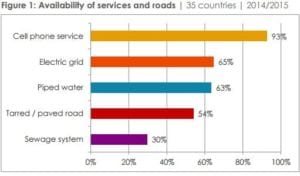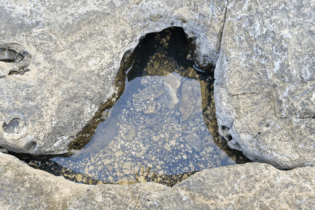
On average across 35 African countries, only about two-thirds of citizens live in communities with an electric grid (65%) and/or piped water infrastructure (63%), and less than one in three have access to sewerage (30%). More than three times as many have access to cell phone service (93%), while about half (54%) live in zones with tarred or paved roads
These insights into citizens’ access to basic services are particularly significant as governments and development partners prioritise investments to ensure inclusive growth.
Key findings
On average across 35 African countries, only about two-thirds of citizens live in communities with an electric grid (65%) and/or piped water infrastructure (63%), and less than one in three have access to sewerage (30%). More than three times as many have access to cell phone service (93%), while about half (54%) live in zones with tarred or paved roads.- Eighteen countries tracked since 2005/2006 show steady, though slow, progress in infrastructure development. On average, the availability of all five services has increased. Sewerage shows the least progress, with access increasing by just 8 percentage points over the past decade.
- Countries vary enormously in their provision of basic service infrastructure. For example, while availability of electricity and piped water is universal in Mauritius and Egypt, only 17% of Burundians live in zones with an electric grid, and only 17% of Liberians have access to piped water.
- Regional comparisons show North Africa with the best availability of all five services, followed closely by Central Africa. East Africa ranks last in the availability of electricity, piped water, sewerage, and cell phone service.
- Rural residents continue to be severely disadvantaged in most countries, with urban rural gaps of more than 40 percentage points in the average availability of an electric grid, sewerage, and piped water infrastructure.








